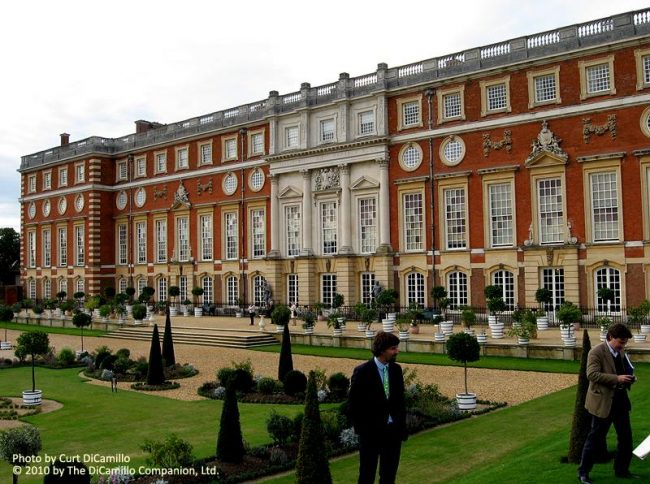
Wren's garden facade
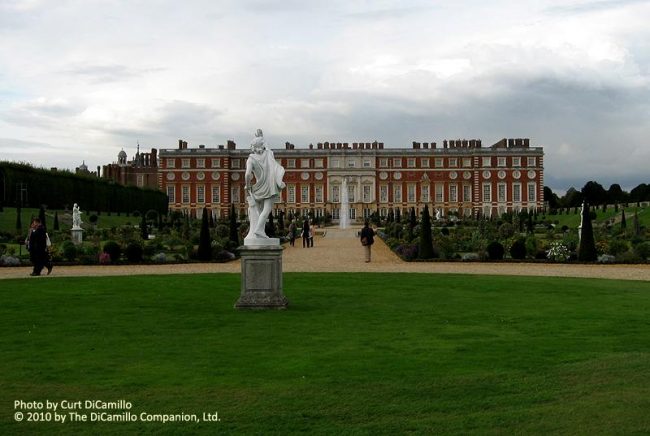
Distance view of Wren's garden facade
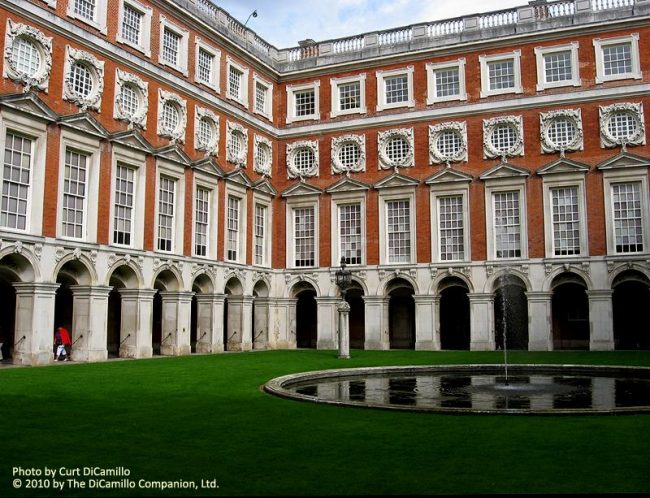
Wren's courtyard
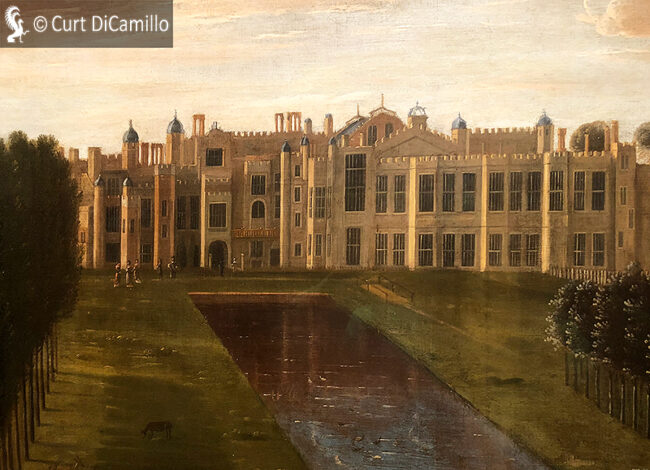
The Tudor palace from Long Water, detail of a circa 1670 painting by Hendrick Danckerts. Today in the collection of the Fitzwilliam Museum.
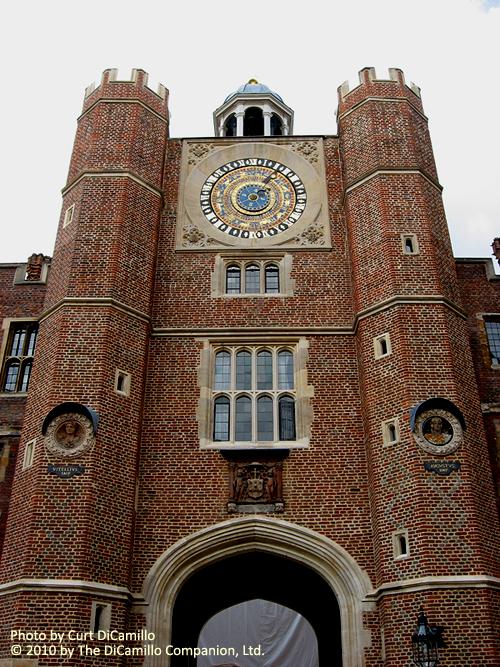
The Tudor clock tower
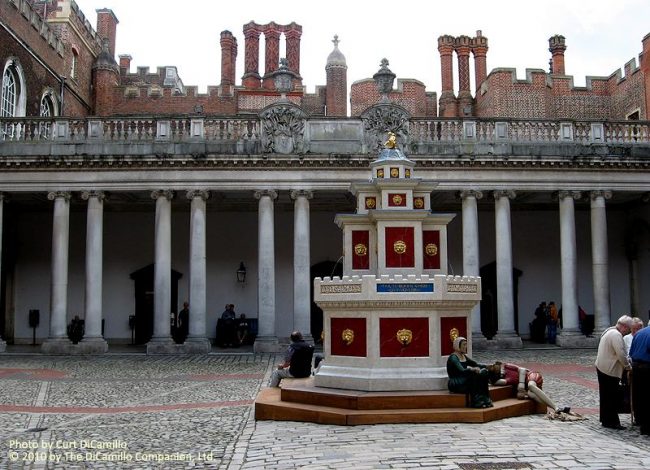
The courtyard
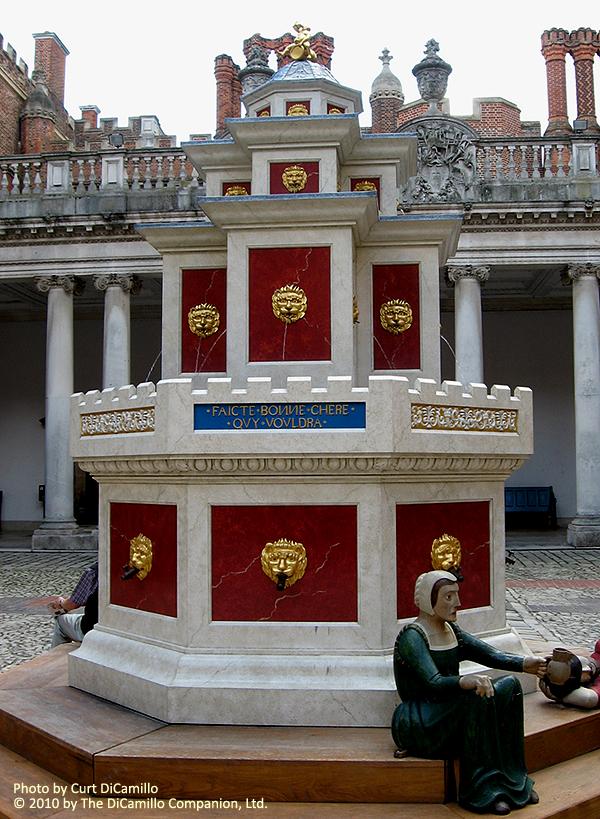
The wine fountain in the courtyard
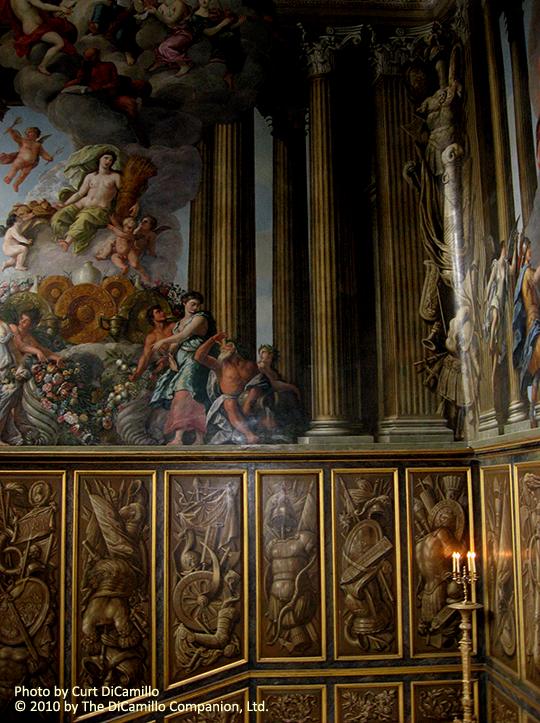
The King's Staircase
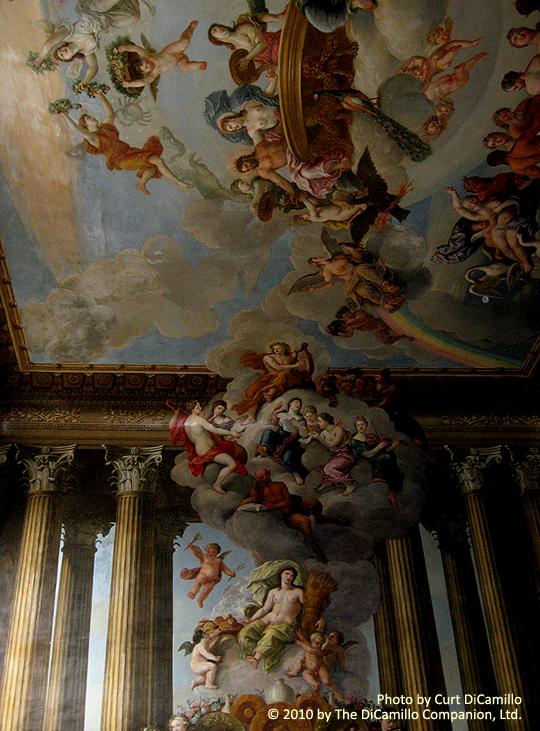
The King's Staircase
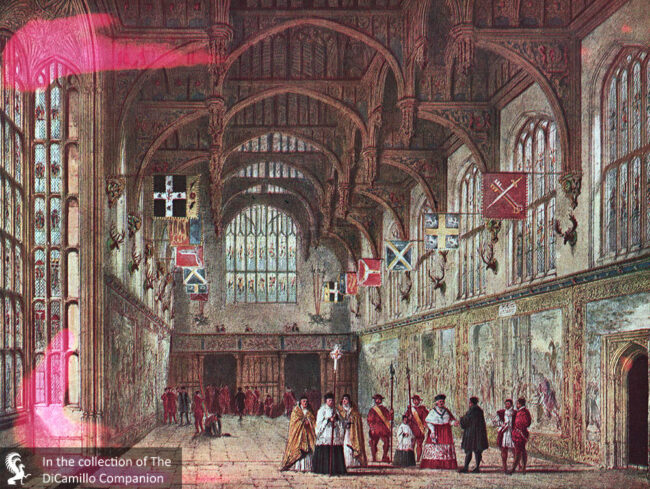
A late 19th century lithograph of the great hall from Joseph Nash's "Interiors of Old English Mansions"
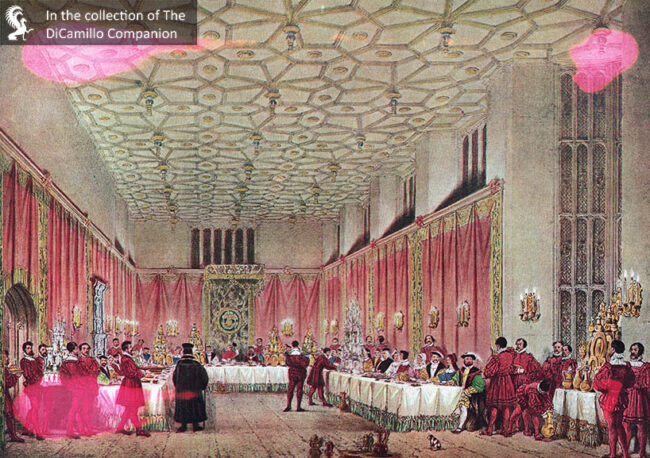
A late 19th century lithograph of the presence chamber from Joseph Nash's "Interiors of Old English Mansions"
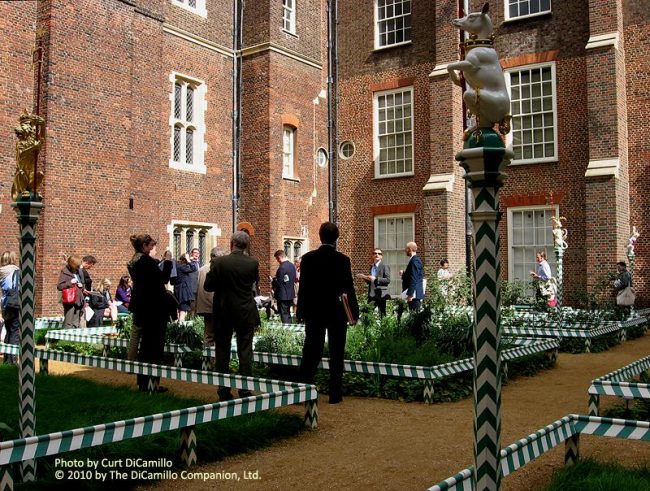
Heraldic beasts in the Tudor Garden
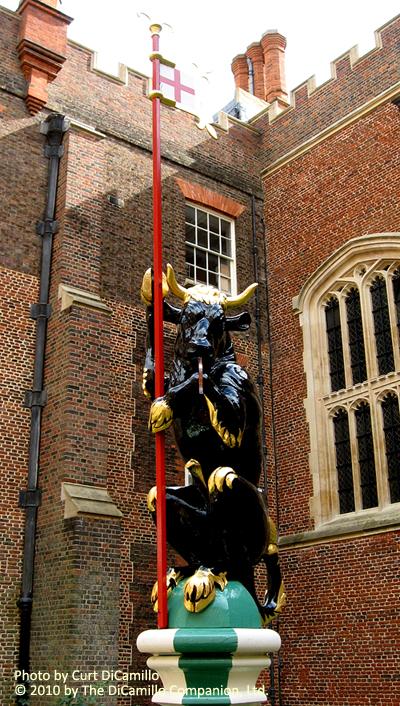
Black Bull of Clarence heraldic beast in the Tudor Garden
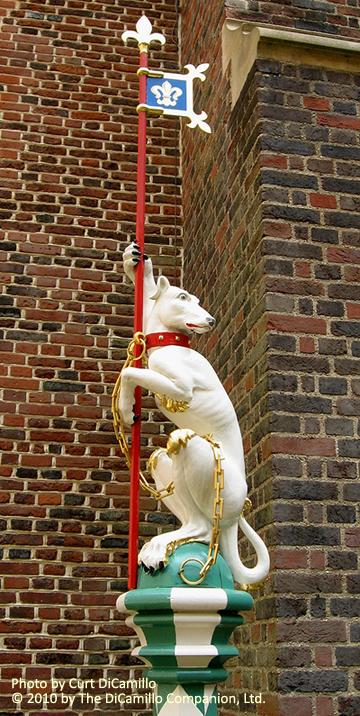
White Greyhound of Richmond heraldic beast in the Tudor Garden
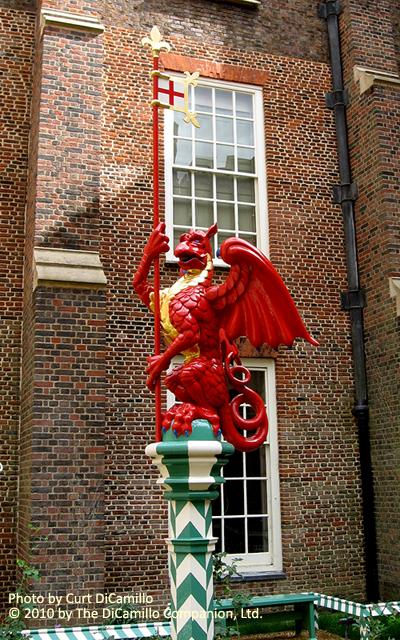
Red Dragon of Wales heraldic beast in the Tudor Garden
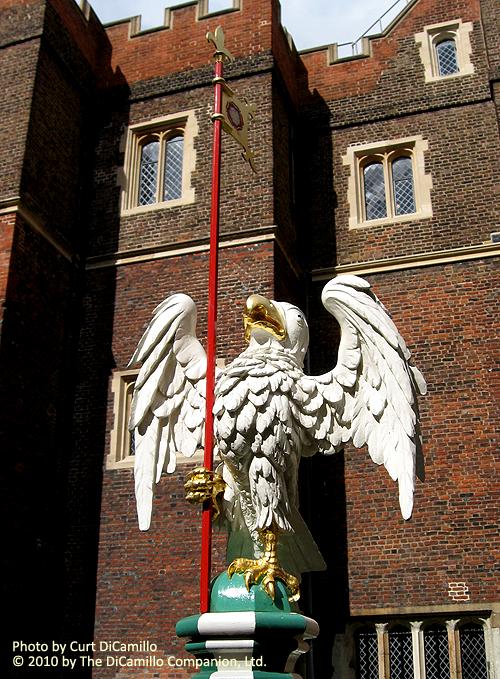
Silver Falcon of the Plantagenets heraldic beast in the Tudor Garden
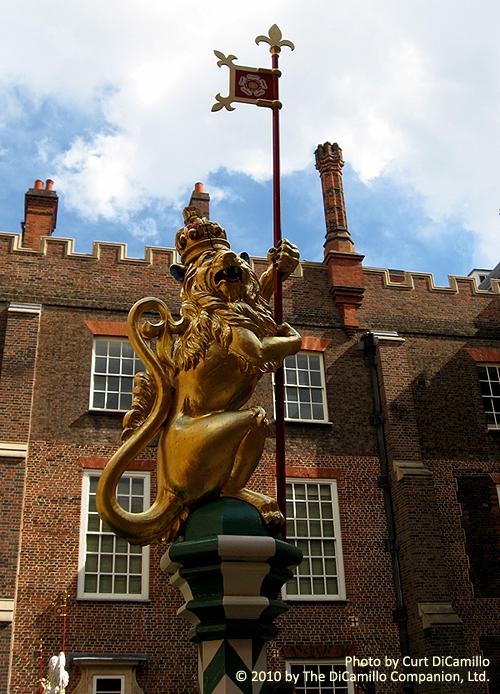
Golden Lion of England heraldic beast in the Tudor Garden
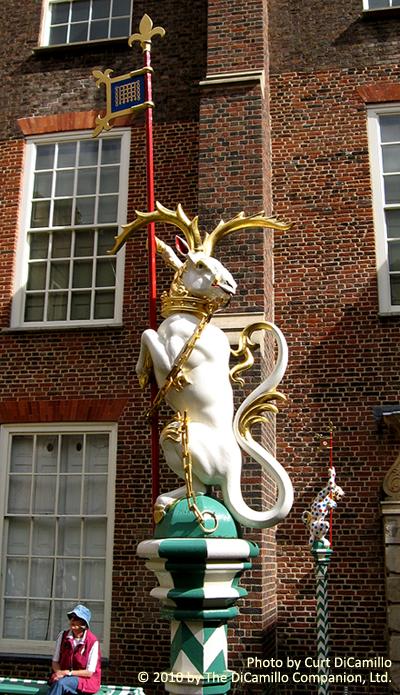
Silver Yale of Beaufort heraldic beast in the Tudor Garden
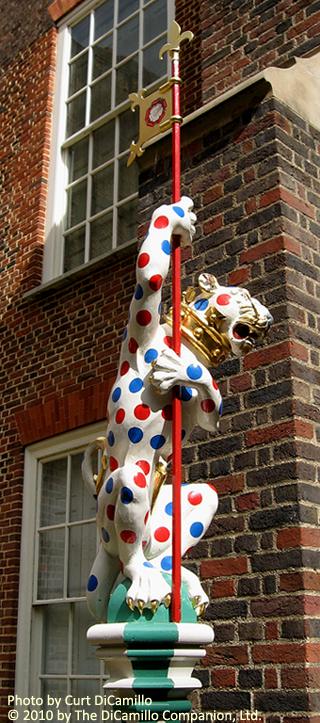
Panther heraldic beast in the Tudor Garden
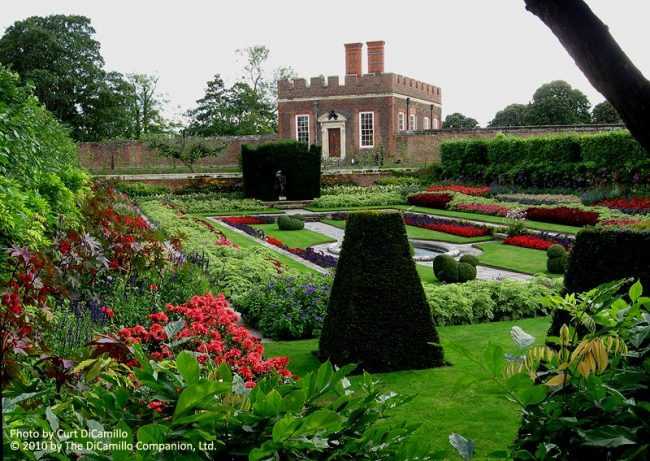
The walled garden
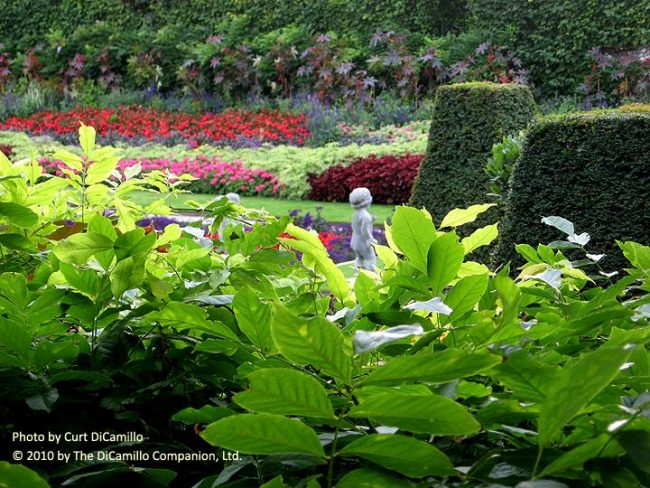
The walled garden
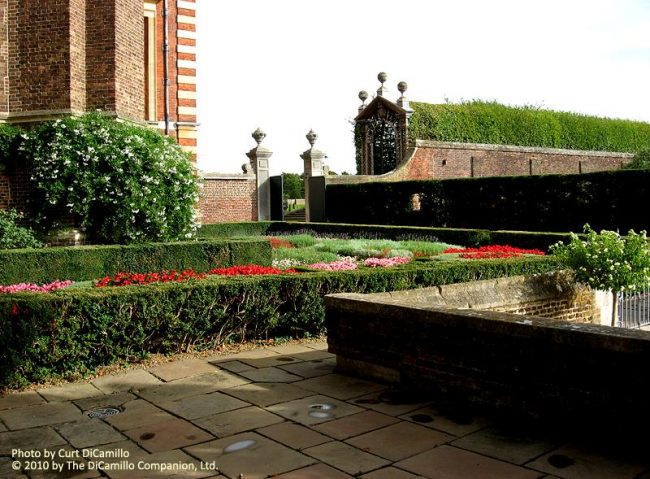
The garden
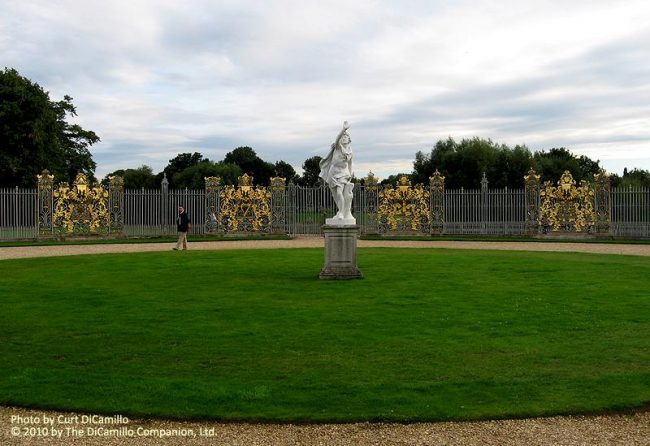
Gates facing Wren's garden facade
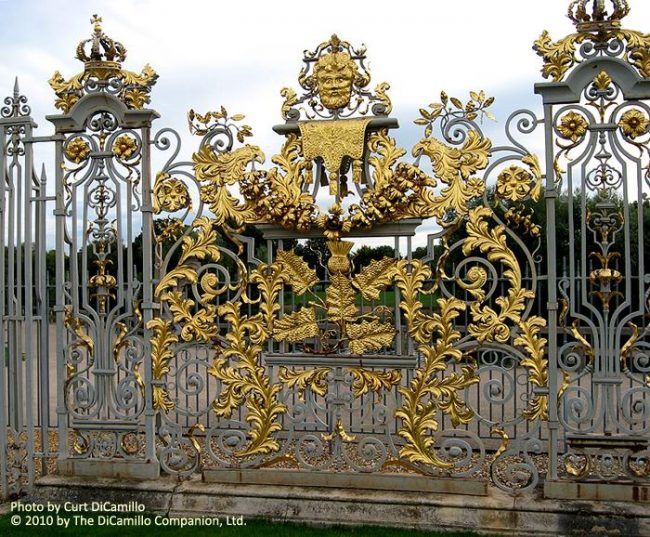
Detail of gates
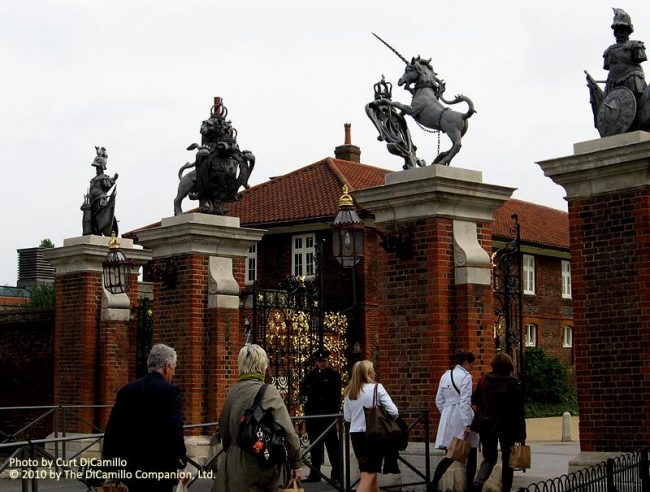
The entrance gates
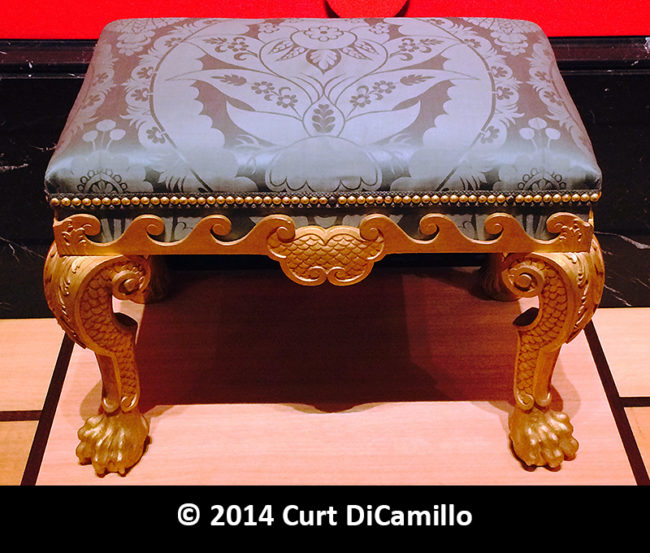
Made in 1737 by Henry Williams for Queen Caroline for Hampton Court Palace, this is one of two stools (all that survives from an original set of 18) today in the Royal Collection.
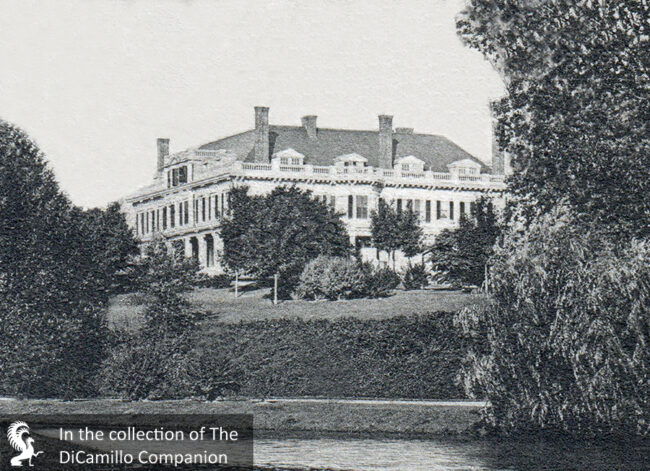
Florham Park, New Jersey, from a 1905 postcard. This late 19th century house was modeled on Hampton Court Palace.
Earlier Houses: In 1514 Thomas Wolsey, archbishop of York, took over a house that was probably built by Lord Daubeney circa 1495. This house itself probably incorporated earlier monastic buildings of the Knights Templar (formerly called The Poor Fellow-Soldiers of Christ and of the Temple of Solomon) and the Knights Hospitaller (the Order of Knights of the Hospital of Saint John of Jerusalem). Today's Great Kitchen is probably the main surviving part of Lord Daubeney's house.
House & Family History: In 1514, at the peak of his power, Cardinal Wolsey acquired the manor as a country residence; Wolsey greatly enlarged the House and installed an advanced sewer system that worked so well it was used until 1871. Wolsey gave the great house he built to Henry VIII in a vain attempt to regain royal favor after he was unable to obtain a divorce from Katherine of Aragon for Henry from Pope Clement VII; the cardinal died on the way to the scaffold. Wolsey was called "the proudest prelate that ever breathed" by contemporaries. After Wolsey's death, Henry VIII added the Royal Tennis Court, circa 1529 (the oldest "real tennis" court in the world), among other buildings. The famous astronomical clock was made for Henry by Nicholas Oursian in 1540; it shows the sun revolving around the earth, the time of day, the phases of the moon, the number of days since the New Year, and the high water at London Bridge. Charles I was famously held prisoner at the Palace in 1647. During the Commonwealth Oliver Cromwell intended to demolish Hampton Court and sell it for scrap, but found it a welcome retreat from the pollution and crowds of London, so retained it as his country residence. From the west Hampton Court is a red brick Tudor palace, from the east it's a Baroque façade by Sir Christopher Wren, who rebuilt the Palace for William III and Mary II (Wren intended to demolish the Tudor parts of the Palace, but a lack of money and the death of Mary II waylaid his plans). Hampton Court hadn't been lived in by a member of the royal family since George II, so it was an understandable decision when Queen Victoria opened the Palace to the public in the 19th century. Legend has it that the ghost of Queen Jane Seymour (Henry VIII's third wife, who died from childbirth complications) haunts Hampton Court. The Palace is also supposedly haunted by the ghost of Queen Katherine Howard (Henry VIII's fifth wife, who was beheaded). In 1893 America's most important architectural firm, McKim, Mead & White, erected Florham Park (see "Images" section), a grand mansion in Madison, New Jersey. Built for Florence Adele Vanderbilt and her husband, Hamilton McKown Twombly, Florham was modeled on Christopher Wren's Baroque additions to Hampton Court. With 110 rooms, Florham is today the eighth-largest house in the United States and the centerpiece of Fairleigh Dickinson University's Florham Campus.
Collections: The collection at Hampton Court is particularly rich in tapestries, including a rare set of Brussels tapestries entitled "The History of Abraham" by Wilhelm Pannemaker. Some of the most important Italian Renaissance works of art in the world are at Hampton Court, one of stars of which is "The Triumphs of Caesar," a series of nine large paintings created by Andrea Mantegna between 1484 and 1492. This amazing series of paintings was part of the Gonzaga Collection purchased by Charles I, and one of the few pieces spared by Cromwell when, under the Commonwealth, the majority of the Royal Collection was sold off. The magnificent Gonzaga Collection deserves a few words. Formed in Mantua by the dukes of Gonzaga over a period of 150 years, it was one of the largest in Europe. It contained over 2,000 paintings and more than 20,000 ceramics, books, manuscripts, bronzes, statuary, coins, medals, and arms. The best of the paintings (and some marbles) were sold to Charles I between 1627 and 1630. The pieces of the Gonzaga Collection that Charles did not purchase were lost or scattered when the Ducal Palace in Mantua was sacked in 1629-30 by troops of the Holy Roman Emperor Ferdinand II as part of War of the Mantuan Succession, a peripheral part of the Thirty Years' War.
Comments: Hampton Court is considered Britain's most important secular historic building complex.
Garden & Outbuildings: Hampton Court contains the most ambitious formal gardens ever built in Britain. In the early 16th century Cardinal Wolsey laid out the first small knot gardens at Hampton Court. Henry VIII greatly enlarged the gardens when he took over the palace in 1529, a tradition that was continued under succeeding monarchs. In the 17th century William and Mary created the Great Fountain Garden on the East Facade to complement the new palace they commissioned from Sir Christopher Wren. Their gardener, the Frenchman Daniel Marot, created a grand goose foot garden, modeled on Versailles, that featured 13 fountains and two radiating avenues of yew trees. The famous Hampton Court maze, in the wilderness area of the garden, was very likely created by the English garden designer Henry Wise for William III after the death of his wife, Queen Mary. In the Pond Garden is a greenhouse where the world famous great vine lives. Believed to be the oldest (and largest) grape vine in the world, the Black Muscat vine was planted in 1768 by Capability Brown and still produces an annual crop of grapes today. In 2009 the Tudor Garden was unveiled at Hampton Court to celebrate the 500th anniversary of Henry VIII’s accession to the throne in 1509. Designed by landscape architect Todd Longstaffe-Gowan, the new garden occupies a space in the Chapel Court and features accurate reproductions of Tudor heraldic beasts.
Chapel & Church: The Chapel Royal's famous vaulted ceiling was installed in the 1530s by Henry VIII. In 1710 Queen Anne commissioned Sir Christopher Wren to remodel the interior of the chapel.
Architect: William Talman
Date: 1699-1702Architect: Charles Bridgeman
Designed: Gardens for King George II and Queen CarolilneArchitect: Christopher Wren
Date: 1690s
Title: Biographical Dictionary of British Architects, 1600-1840, A - SOFTBACK
Author: Colvin, Howard
Year Published: 1995
Reference: pgs. 133, 953
Publisher: New Haven: Yale University Press
ISBN: 0300072074
Book Type: Softback
Title: SPAB News
Author: NA
Year Published: NA
Reference: Vol. 25, No. 1, 2004, pg. 59
Publisher: London: The Society for the Protection of Ancient Buildings
ISBN: NA
Book Type: Magazine
House Listed: Grade I
Park Listed: Grade I
Past Seat / Home of: SEATED AT EARLIER HOUSE: Giles Daubeney, 1st Baron Daubeney, 15th century. SEATED AT CURRENT HOUSE: Cardinal Thomas Wolsey, 16th century. King Henry VIII, 16th century. King William and Queen Mary, 17th century. King George II, 18th century.
Current Ownership Type: The Crown / Royal Family
Primary Current Ownership Use: Visitor Attraction
Ownership Details: Managed by Historic Royal Palaces
House Open to Public: Yes
Phone: 02031-666-000
Email: [email protected]
Website: https://www.hrp.org.uk/
Historic Houses Member: No